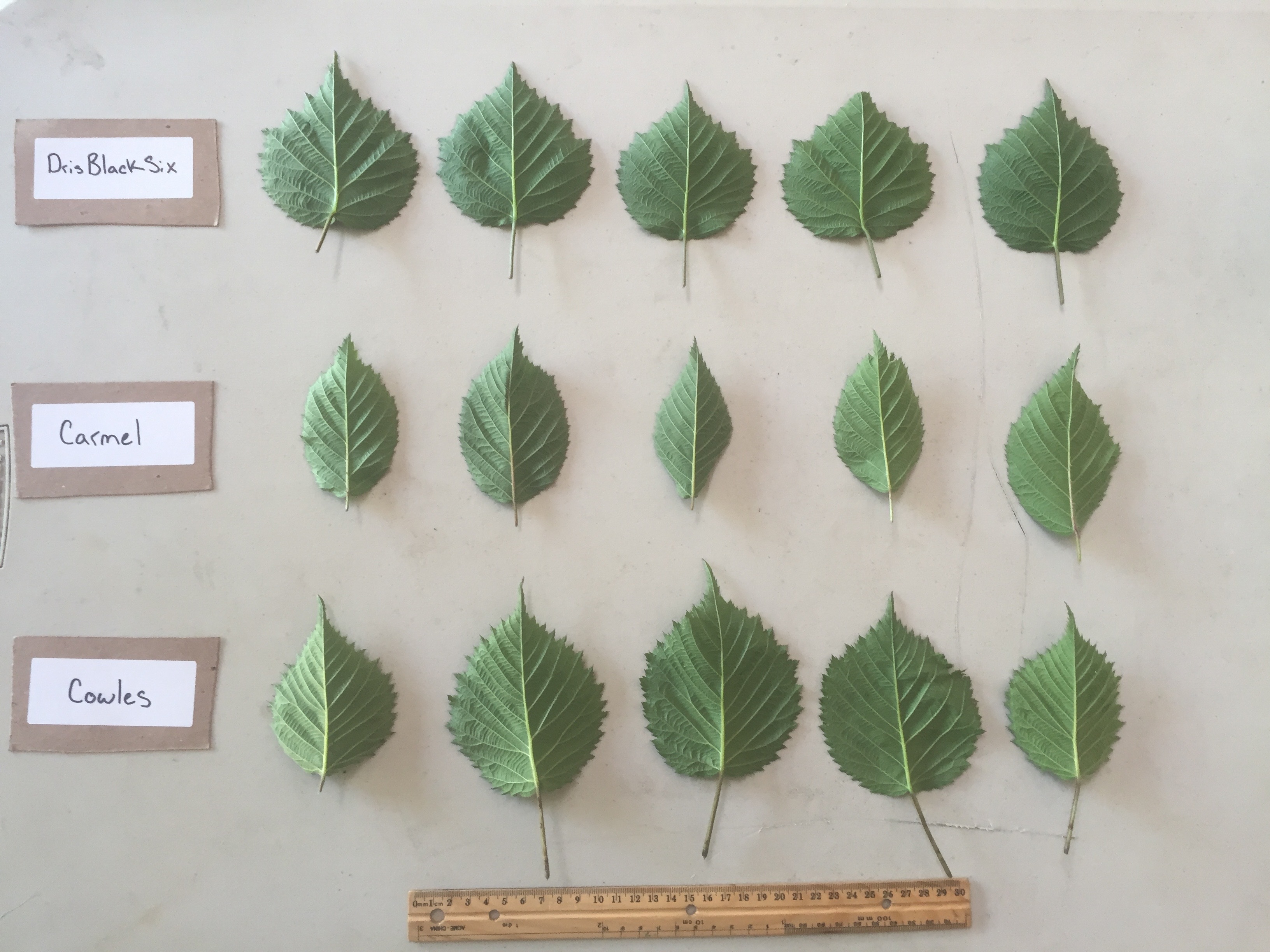DrisBlackSix
| Denomination: | 'DrisBlackSix' |
|---|---|
| Trade name: | Victoria |
| Botanical Name: | Rubus allegheniensis |
| Applicant/Holder: |
Driscoll's, Inc. 345 Westridge Drive Watsonville, California 95076 United States of America |
| Breeder: |
Gavin R. Sills, Driscoll's, Inc., Watsonville, United States of America Andrea M. Pabon, Driscoll's, Inc., Watsonville, United States of America Stephen Moyles, Soquel, United States of America |
| Agent in Canada: |
Lavery, De Billy, S.E.N.C.R.L. - LLP 1 Place Ville Marie, Suite 4000 Montreal, Quebec H3B 4M4 Canada Tel: 514 397-5138 |
| Application Date: | 2014-01-22 |
| Application Number: | 14-8177 |
| Grant of Rights Date: | 2018-03-06 |
| Certificate Number: | 5678 |
| Grant of Rights Termination Date: | 2038-03-06 |
Variety Description
Varieties used for comparison: 'Carmel' and 'Cowles'
Summary: The anthocyanin colouration of the dormant cane of 'DrisBlackSix' is strong to very strong whereas it is weak to medium for 'Carmel'. There are no spines on the dormant canes of 'DrisBlackSix' whereas there are a medium number of medium sized spines on the dormant canes of 'Carmel'. During rapid growth, the young shoot of 'DrisBlackSix' has medium to strong anthocyanin colouration with a medium number of glandular hairs whereas those of 'Carmel' have weak anthocyanin colouration and absent or few glandular hairs. The leaves of 'DrisBlackSix' have predominantly seven leaflets whereas 'Cowles' has predominantly five. The flower petals of 'DrisBlackSix' are white whereas those of 'Cowles' are white with a violet tinge. The density of glandular hairs on the flower pedicel of 'DrisBlackSix' is medium whereas it is absent or very sparse for 'Carmel' and dense for 'Cowles'. The length to width ratio of 'DrisBlackSix' is medium whereas it is large for both reference varieties. The drupelets of 'DrisBlackSix' are large whereas they are small to medium size for both reference varieties. In longitudinal section, the fruit shape of 'DrisBlackSix' is medium ovate whereas it is oblong for both reference varieties. The fruit of 'DrisBlackSix' begins ripening late whereas it begins mid-season for both reference varieties.
Description:
PLANT: semi-upright to spreading growth habit, medium number of new canes, non-suckering
DORMANT CANE: strong to very strong anthocyanin colouration, medium number of branches, branches distributed over entire length of cane, rounded to angular in cross section
SPINES: absent
YOUNG SHOOT (during rapid growth): medium to strong anthocyanin colouration, light to medium intensity of green colour, medium number of glandular hairs
LEAF: predominantly seven leaflets per leaf, palmate type, medium to dark intensity of green colour of upper side, medium to strong glossiness of upper side, medium size stipules
TERMINAL LEAFLET: lobing absent, u-shaped in cross section, absent or very weak undulation of margin, very weak blistering between veins, medium depth bi-serrate incisions of margin
BEGINNING OF FLOWERING ON PREVIOUS YEAR'S CANE: mid to late season
FLOWER: white, medium density of glandular hairs on pedicel
BEGINNING OF FRUIT RIPENING: late
FRUITING LATERAL: absent to very few prickles
FRUIT: bears on previous year's cane, medium length to width ratio, medium number of large drupelets, medium ovate shape in longitudinal section, black
Origin & Breeding History: 'DrisBlackSix' is the result of the cross between 'BF785-1' (female parent) and 'Cowles' (male parent) conducted in April 2003 in Santa Cruz County, California, USA. Fruit and seed were collected to produce seedlings for field planting. In June 2005, 'DrisBlackSix' was selected for its high yield, long production season and vigorous plants. 'DrisBlackSix' was further propagated and underwent additional testing from 2010 to 2012.
Tests & Trials: The comparative trial for 'DrisBlackSix' was conducted at Expert Agriculture Team, Chilliwack, British Columbia during the 2016 growing season. The plots were planted in the spring of 2014 in a randomized complete block design. Each variety consisted of 3 replicates per variety with 3 plants per replicate for a total of 9 plants of each variety. Plants were spaced approximately 1.2 metres between plants in the row and the rows were spaced approximately 2.5 metres apart.
Click on image for larger view

Blackberry: 'DrisBlackSix' (top) with reference varieties 'Carmel' (centre) and 'Cowles' (bottom)
Click on image for larger view

Blackberry: 'DrisBlackSix' (bottom) with reference varieties 'Carmel' (centre) and 'Cowles' (top)
- Date modified: